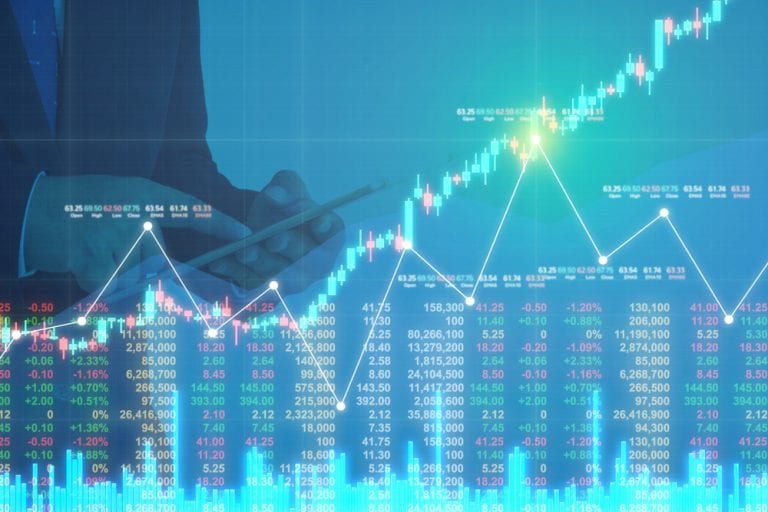
There are a number of continuation patterns such as triangles, flags, pennants and rectangles. They occur mid-trend and are an indication that the trend will occur once the pattern is finished being ‘drawn’. You can find these patterns on all time frames, so there’s no need to fear that you’ll miss them on the weekly charts or only see them on daily charts and vice versa.
Triangles
One of the most prevalent patterns is triangular. Converging price action is behind the formation of a triangle. The three basic types of triangle are symmetrical, ascending and descending. For the purposes of trading strategies, the three types of triangles can be traded in a similar fashion.
Pennants
Closest in similarity to triangles are pennants. Because they are smaller than triangles, it only takes a few bars to create them. In fact, if a pennant contains 20 or more price bars, it can be considered a triangle, although this rule is not set in stone. This pennant pattern is created as prices converge in the middle of a trend around a narrow price range. This is what gives rise to the pennant shape.
Flags
Flags are a brief stop or pause in the trend. In a flag, the price becomes stuck in a narrow price range between parallel lines. It is this pause in the middle of a trend that gives rise to a the flag-imitating shape in the data. Usually, flags don’t last long and may be parallel, upward or downward sloping.
Rectangles
These are the last of the continuation shapes. Rectangles are also known as trading ranges, and you’ll find them spanning short periods or many years. This is a particularly common pattern which can happen over the course of a single day as well as in long time periods.
Important things to note about continuation patterns
As with all other shapes, trading patterns provide a factual basis to help confirm your instinctive intuition, offering insights into opportunities that may otherwise be missed. But, as always, everything may not be what it seems with a pattern. A pattern may occur during a trend, but the trend may turn suddenly or even reverse. There is no guarantee of a trend simply because the shape is one that indicates continuity.
It is also possible that the outer bounds may be slightly penetrated, without a full breakout occurring. When this happens, it is a false breakout, and can occur multiple times before the pattern is in fact broken and either the trend continues or is reversed. Due to their popularity and easy visibility, rectangles, in particular, are highly susceptible to false breakouts.
Of course, patterns can also be subjective – what you see is not necessarily what the next investor might see. To sum up, continuity patterns can help to provide great logic and predict continuity. In order for things to continue after the pause that is the pattern in the middle of the trend, a breakout needs to happen. However, it is not a given that there will be a breakout instead of a reversal, and this is why continuity patterns are not set in stone or completely reliable. What seems to be a breakout could also be a false breakout. That said, the longer you read charts and immerse yourself in patterns, the quicker you’ll be to spot not only the shapes, but the early warning signals of any deviation.
PEOPLE WHO READ THIS ALSO VIEWED:
